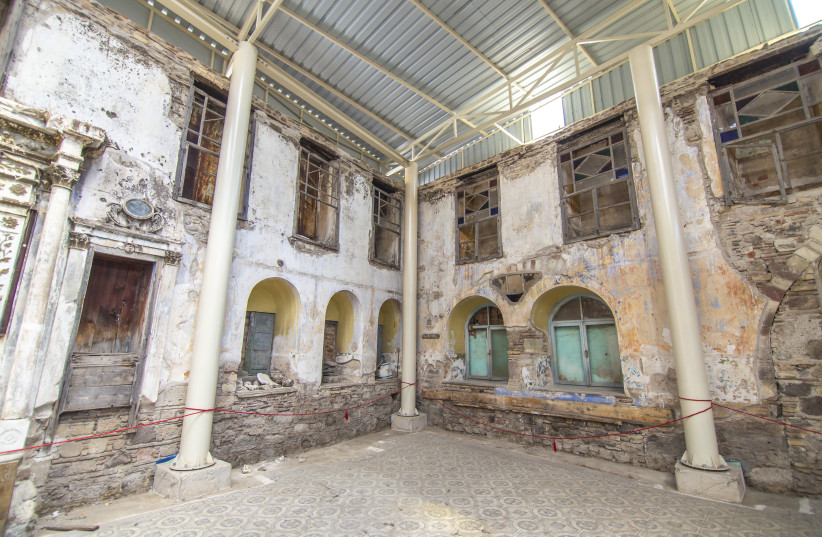The discovery at kibbutz Beit Alfa in the Jezreel Valley in 1928 was shocking.
Workers at the collective were digging a drainage ditch when they came across a beautiful and provocative mosaic. Dominating the mosaic were the signs of the zodiac and Hebrew letters. They contacted Hebrew University archaeology professor Eliezer Sukenik – father of Yigael Yadin – and he brought his 11-year-old son to excavate what had been the floor of an ancient synagogue.
In his 1998 study of modern Israel’s history, Sir Martin Gilbert quotes the insight of archaeologist Neil Asher Silberman regarding this remarkable discovery: “For the settlers of the Jezreel Valley, it was validation of their physical presence; for the non-religious Jews of the country, it revealed a lively Judaism that freely borrowed motifs from other cultures; for the religious, it demonstrated the continuity of their religious rituals over millennia; and for the politically minded, it evoked a period in which the Jewish community of Palestine had maintained at least nominal autonomy.”
How would the early rabbis, 2,000 years ago, have reacted to artwork in a synagogue, especially the pagan zodiac? Would they have not condemned graven images in a House of God? How powerful were the first rabbis in controlling the physical and spiritual life of the Jewish community in the Land of Israel and the Diaspora?
These questions remain unanswered. Scholar Barry W. Holtz in his 2017 study of the greatest rabbi of the ancient world – Akiva – “the rabbis started out as a small and self-enclosed group, creating a culture that would eventually blossom into what we now call ‘rabbinic Judaism.’” It took decades, if not centuries, for the rabbinic class to take the helm of Judaism and Jewish practice. Early synagogues in the Land of Israel and the Diaspora were likely not led by the rabbis.

Synagogues, although they grew in importance after the Roman Empire razed Jerusalem in 70 CE, precede the destruction of the Second Temple by hundreds of years. There was no rabbinate yet so the activity within their walls did not focus on rabbinic prayers that had not yet been composed. Study of Torah, teaching, celebrating Shabbat and holidays, chanting from the Torah and Prophets, and gathering for communal meetings – these were the focus of the synagogue when the Temple in Jerusalem still stood.
The Great Synagogue of Alexandria pre-dates the destruction in Jerusalem by hundreds of years. It was eventually destroyed by the Roman Empire in the Diaspora rebellion of 115-117 CE. But for most of its existence, there were no rabbis in Israel or the Exile. The reality of the synagogue today is not the reality of the ancient synagogue.
In his excellent From the Maccabees to the Mishnah (1987), historian Shaye J.D. Cohen writes that “Most striking are those synagogues, predominantly in Galilee in the late forth to sixth centuries, that have on the floor of the center of the main hall a mosaic of the 12 signs of the zodiac revolving around the sun chariot.” Cohen continues “If the synagogues had been bastions of rabbinic Judaism, would they have been decorated in this fashion?”
Cohen bolsters his argument with ancient synagogues that contain inscriptions that record donations or name the officers of the congregation. Archaeological digs reveal that “Rabbis seldom figure in these inscriptions, and when they do they invariably are donors, not officers.”
Cohen does mention a few synagogues most likely rabbinic. But his conclusion is that “Rabbinic domination of the synagogue was the result of a long and gradual process.”
None of this discussion demeans the rabbis of the ancient world. What the rabbis did over the centuries in Israel and Babylonia was remarkable. They opened a “big tent” that absorbed Jewish communities throughout the world.
Yet, we cannot rely on the Talmud to portray an accurate and historical evolution of the power of the rabbis. Rabbi Yohanan Ben Zakkai, Rabbi Judah Ha-Nasi and Rabbi Akiva were only the beginning of an inspiring and spectacular story.
The writer is rabbi of Congregation Anshei Sholom in West Palm Beach, Florida.
